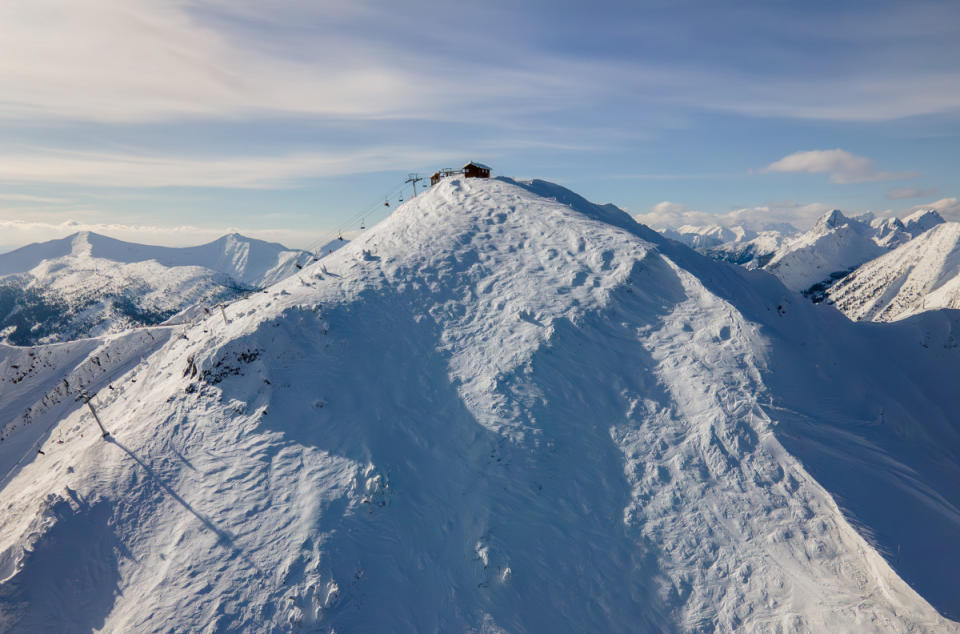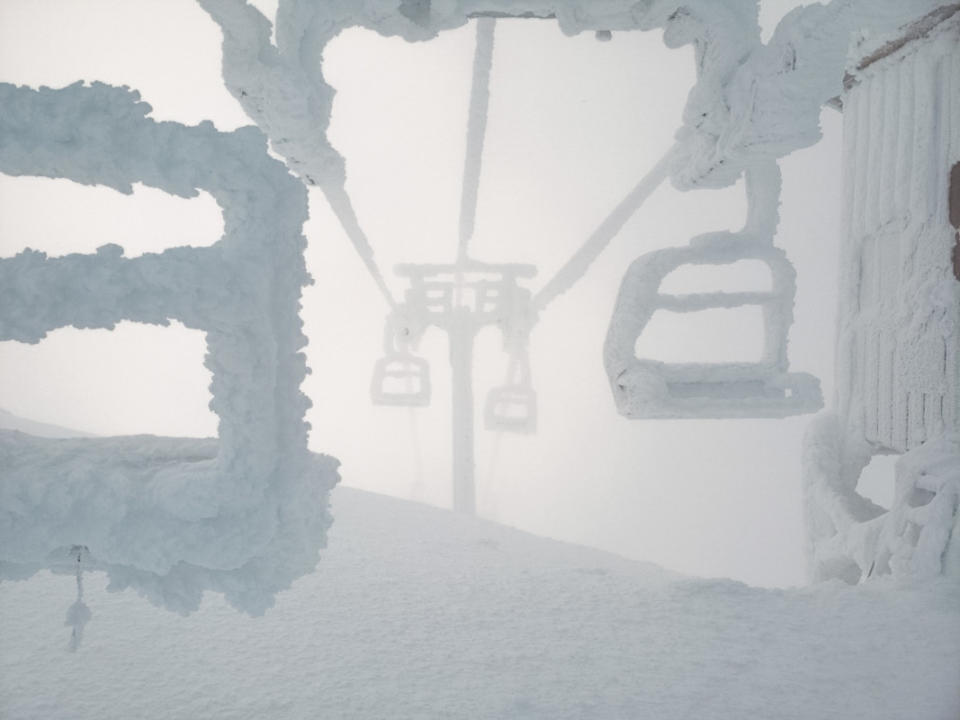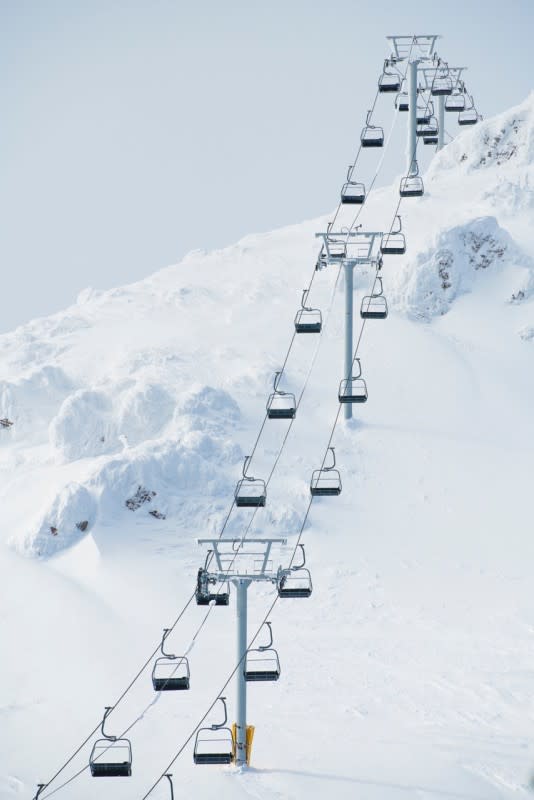Canadian Ski Resort Removing Intermediate Terrain From Famous Chairlift. Here’s Why.
Perched at 7,000 feet, Fernie Alpine Resort, British Columbia's Polar Peak chairlift punches upwards into the high alpine, offering 360-degree views of the surrounding Lizard Range. Beneath the humble three-seater lies several committing descents, some of which are "no fall zones."
This natural terrain network isn't friendly to those making their first tentative turns—to ride Polar Peak is to accept that you're entering "experts only" terrain.
Or, at least, that'll be the case this coming ski season at Fernie. For years, Polar Peak's terrain wasn't just a slice of Mother Nature's unfiltered creations. Humans—Fernie's management team—also had a hand in shaping what skiers encountered when they offloaded Polar Peak. When I skied Fernie last season, a somewhat gentle, intermediate road lived on the skier's right side of Polar Peak, presumably constructed so guests of multiple skill levels could enjoy the vistas at the top of the chair.

Fernie Alpine Resort/Aaron McCartney
But that intermediate road is now gone. Fernie has returned Polar Peak to its natural state. It's a seemingly counterintuitive move, as several major resorts throughout North America strive to maintain skill-level accessibility across all of their terrain offerings. For instance, Whistler's Peak Chair isn't just a freeride mecca where a false move could land you in the hospital—it also houses a beginner run called Matthew's Traverse that can deliver fledgling skiers to gentler slopes.
In some cases, this accessibility-first approach isn't possible. You'd struggle to squeeze a beginner run into Big Sky, Montana's Lone Peak Tram terrain network. However, many resorts capitalize on the opportunity when the option to construct a mellow run exists amidst more committing terrain. Making The Slopes Fun From Day 1, an article published in 2022 by The New York Times, explored the burgeoning emphasis on the beginner skiing experience, noting that multiple North American resorts, like Beaver Creek, Steamboat, and Copper Mountain, have recently invested in constructing beginner zones—sometimes altering the mountainous landscape in the process.
I'll always back initiatives that seek to expand skiing beyond its core audience—there's room for everyone in our shared sport. However, against this backdrop of beginner forward developments, Fernie's decision to do the opposite—preserving natural terrain even if it limits who can access a small portion of its piste—will probably be comforting to those seeking unaltered slices of the mountain during lift-accessed days.
For Fernie, it was a question of expectations, logistics, and providing a consistent, quality terrain offering. Regularly grooming the intermediate road on Polar Peak proved too challenging for the payoff, as the chair experiences high winds and inclement weather. "If we could get a cat up there on a regular basis, you know, you could have some decent corduroy," says Tyler Steen, Fernie's ski patrol director. However, "It was extremely challenging to get a snowcat up there."
Therefore, the "intermediate" demarcation on Fernie's trail map could sometimes be misleading when conditions didn't cooperate. One season, when Polar Peak temporarily operated without the road, Steen found that the lift's experts-only incarnation "provided a better product" and aligned more closely with skier expectations.

Fernie Alpine Resort
With the elimination of the intermediate road from Fernie's trail map, intermediate or beginner skiers won't be enticed to try runs on Polar Peak that they might be unable to handle, a development Steen—ever safety conscious—calls "great." Steen also confirms the decision doesn't come at the cost of Fernie's other intermediate offerings, "We have unlimited amounts of intermediate terrain at our resort."
View hunters, you're covered, too. While Polar Peak might have top-notch vistas, plenty of other lookouts exist on the mountain sans expert skiing.
The added benefit is the establishment of Polar Peak as an unadulterated big mountain playground for those pursuing high-octane skiing experiences. "Polar Peak was meant to be without any kind of human-made interruptions being cat tracks, roads, and things like that," says Steen. This season, when you ride Polar Peak, it'll be just you and the mountain—minus the hoots and hollers of other skiers, of course.
But what good is a freeride haven if you can't access it? Steen explains that improving weather management practices at Polar Peak was another goal. The heavy storms that battered the resort season after season weren't just a problem for maintaining Polar Peak's intermediate road—they also frequently barred the lift's opening altogether. Steen says the snow management team tried everything, like snowblowers, to keep the lift spinning during storms, yet there would still be times when "we just deemed that a no-go zone until the storm" ended.

Fernie Alpine Resort/Mark Shannon
From a skier's perspective, Fernie's challenges with Polar Peak are evident. During my trips to Fernie over the years, Polar Peak was usually the last lift to open on any giving day—if it opened at all.
The solution might lie in a snowcat set to live at the top of Polar Peak season long. Steen has worked with Fernie's maintenance team to install a modified snowcat—complete with a custom "barbeque cover"—at the lift's summit terminal. This way, when a storm arrives, Fernie's snow management crew can act fast, potentially leading to quicker openings for Polar Peak. "We feel fairly confident that we might have found the right tool for the job," says Steen.
These changes—the road removal and snowcat installation—are potentially transformative for Polar Peak. The chair and its terrain will no longer awkwardly straddle the gray area between intermediate and expert, with the promise of faster opening times and additional double black diamonds to boot. If anything, Polar Peak's terrain alteration furthers the sentiment I expressed earlier in this article. There is room for everyone in skiing, including expert skiers seeking unfiltered high-altitude terrain—without hitting the skin track, that is.
Related: Skier Loses His iPhone On Huge Jump
Don't miss another headline from POWDER! Subscribe to our newsletter and stay connected with the latest happenings in the world of skiing.
We're always on the lookout for amusing, interesting and engaging ski-related videos to feature on our channels. Whether you're a professional or just an amateur, we want to see your best footage and help you share it with the world. Submit your video for a chance to be featured on POWDER and our social channels. Be sure to subscribe to our YouTube channel to watch high-quality ski videos.

